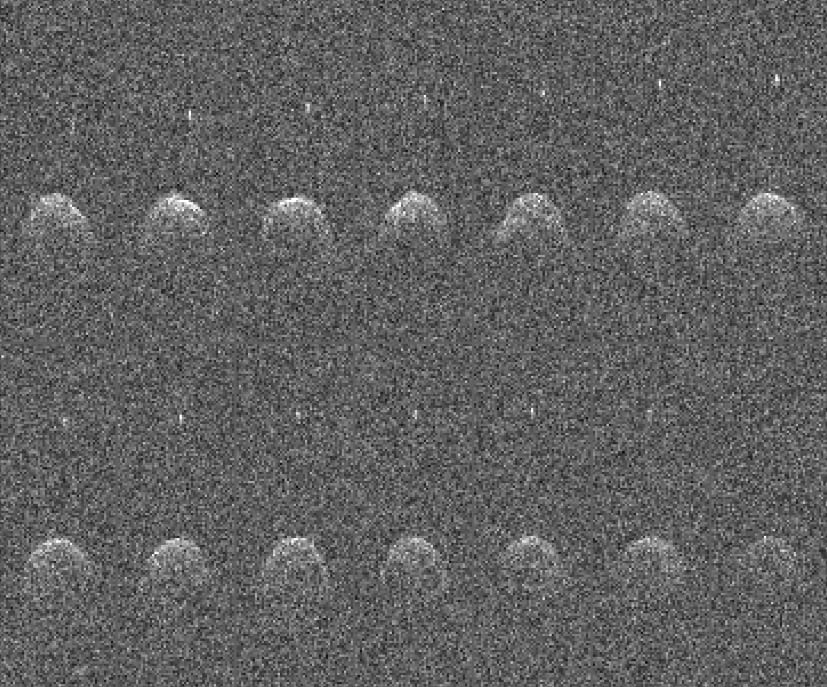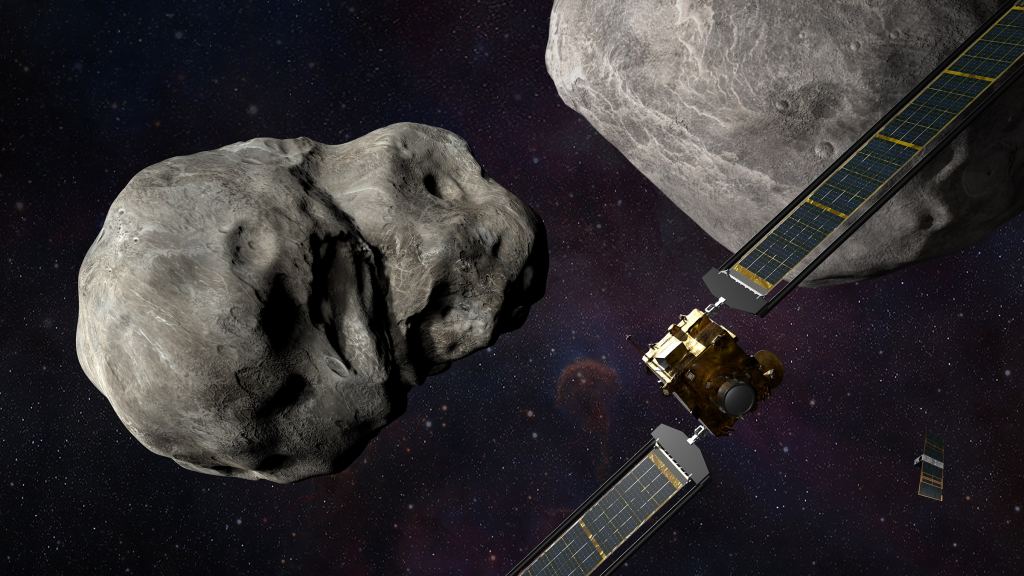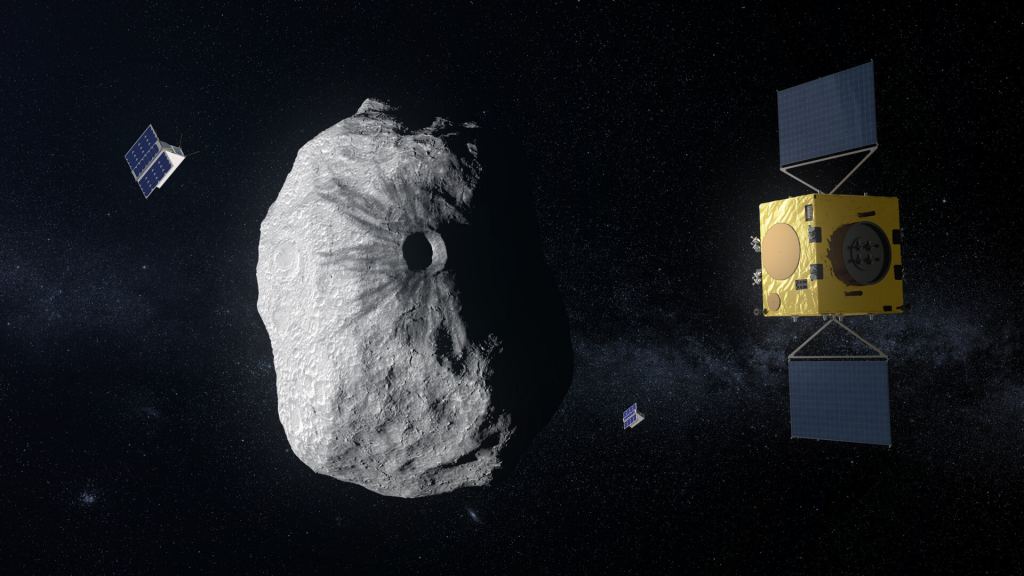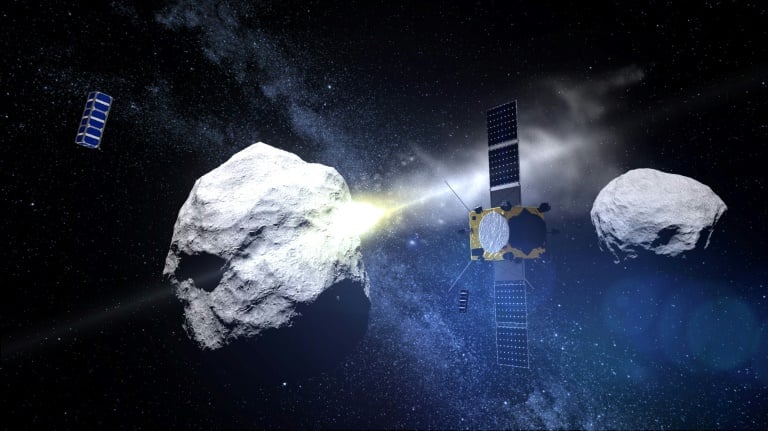In the early hours of the morning on Wednesday, Nov. 24th, NASA's Double Asteroid Redirection Test (DART) launched from Space Launch Complex 4 East at Vandenberg Space Force Base (SFB) in California. This spacecraft is the world's first full-scale mission to demonstrate technologies that could someday be used to defend our planet from Near-Earth Asteroids (NEAs) that could potentially collide with Earth.
Put simply, the DART mission is a kinetic impactor that will evaluate a proposed method for deflecting asteroids. Over the next ten months, the DART mission will autonomously navigate towards the target asteroid - the binary NEA (65803) Didymos - and intentionally collide with it. If everything goes according to plan, this will alter the asteroid's motion so that ground-based telescopes can accurately measure any changes.
The launch took place at 01:31 AM EST (Tues. Nov. 23rd, 10:31 PM PST) when the DART mission took off from SLC-4E atop a SpaceX *Falcon 9* rocket. At 02:17 AM (11:17 PM PST), DART separated from the booster's second stage and began sending telemetry data back to missions controllers minutes later. About two hours later, the spacecraft unfurled the two 8.5-meter (28-foot) large solar arrays that will power its Solar-Electric Propulsion (SEP) thruster.
The collaborative DART effort was built and is led by the Johns Hopkins University Applied Physics Laboratory (JHUAPL). The mission is managed under NASA's Planetary Defense Coordination Office and Planetary Science Division, with support provided by multiple NASA centers. The mission is compromised of multiple elements provided by NASA, the European Space Agency (ESA), and other partner agencies. As NASA Administrator Bill Nelson explained in a recent NASA press release:
“DART is turning science fiction into science fact and is a testament to NASA’s proactivity and innovation for the benefit of all. In addition to all the ways NASA studies our universe and our home planet, we’re also working to protect that home, and this test will help prove out one viable way to protect our planet from a hazardous asteroid should one ever be discovered that is headed toward Earth.”
"At its core, DART is a mission of preparedness, and it is also a mission of unity," said Thomas Zurbuchen, the associate administrator for the Science Mission Directorate at NASA Headquarters. "This international collaboration involves DART, ASI's LICIACube, and ESA's Hera investigations and science teams, which will follow up on this groundbreaking space mission."
The mission consists of two spacecraft, the 610 kg (1,340 lb) impactor that relies on the NEXT ion thruster, a type of solar electric propulsion that uses solar arrays to power its NASA Evolutionary Xenon Thruster–Commercial (NEXT-C) engine. The target for this mission, named for the Greek word "twin," consists of a larger primary asteroid (65803) named Didymos, and an orbiting moonlet named Dimorphos.
Whereas (65803) Didymos measures about 780 meters (2,560 ft) in diameter, Dimorphos is less than one-quarter the size (160 m; 530 ft). This moonlet will be the primary target for DART, which will rendezvous with the system between Sept. 26thand Oct. 1st, 2022. At this time, the binary asteroid's orbit will bring it within 11 million km (6.8 million mi) from Earth, where DART will be waiting to collide with Dimorphos at a speed of about 6 km/s (4 mi/s).
Scientists estimate that this will shorten Dimorphos' orbit around Didymos by several minutes, which they will precisely measure using ground-based telescopes. The results will be used to validate and improve the computer models that are currently used to predict the outcomes of asteroid deflection. This change in speed will be far easier to measure than a change in Didymos' orbital velocity (hence why Dimorphos was selected).
The DART spacecraft will be accompanied by a second spacecraft called the Light Italian CubeSat for Imaging of Asteroids (LICIACube), provided by the Italian Space Agency (ASI). This small CubeSat will piggyback with DART, separate ten days before impact, then capture images of the impact's effect and the ejecta created. Roughly four years after DART impacts the moonlet, the ESA's Hera project will arrive at Didymos to conduct detailed surveys of both asteroids.
This test will provide vital data that will be used to develop improved preparations and strategies for asteroid defense. While Didymos does not currently pose a threat to Earth, it is classified as a "potentially hazardous asteroid." This designation applies to asteroids measuring 100 m (~330ft) or more in diameter and whose orbit brings them within 0.05 AU (7.5 million km) of Earth.
In the past, impacts by these similarly-sized objects are believed to have caused extinction level events (ELEs), such as the Chicxulub Impact Event that triggered the extinction of the dinosaurs. As Lindley Johnson, planetary defense officer at NASA Headquarters, said:
“We have not yet found any significant asteroid impact threat to Earth, but we continue to search for that sizable population we know is still to be found. Our goal is to find any possible impact, years to decades in advance, so it can be deflected with a capability like DART that is possible with the technology we currently have. DART is one aspect of NASA’s work to prepare Earth should we ever be faced with an asteroid hazard. "In tandem with this test, we are preparing the Near-Earth Object Surveyor Mission, a space-based infrared telescope scheduled for launch later this decade and designed to expedite our ability to discover and characterize the potentially hazardous asteroids and comets that come within 30 million miles of Earth’s orbit.”
Next week, DART will activate the only instrument it carries - the Didymos Reconnaissance and Asteroid Camera for Optical navigation (DRACO) - and take the spacecraft's first images. In addition to its sophisticated navigation system, DART will rely on a series of Small-body Maneuvering Autonomous Real Time Navigation (SMART Nav) algorithms. These will enable DART to identify and distinguish between the two asteroids, then direct itself towards Dimorphos.
Joan Marie is a science communicator, STEM advocate, and an Aerospace Integration Engineer with the NASA Kennedy Space Center (KSC). She and her colleagues worked through the night in order to prepare the DART mission for launch at Vandenburg SFB. "It felt amazing," she said. "Being able to see (visually) the hard work our team put into this launch was an incredible feeling."
Also present was Andy Cheng, one of the DART investigation leads at JHUAPL and the individual who came up with the idea of DART. As he described it, seeing the mission he conceived take flight was a dream come true:
"It is an indescribable feeling to see something you've been involved with since the 'words on paper' stage become real and launched into space. This is just the end of the first act, and the DART investigation and engineering teams have much work to do over the next year preparing for the main event? DART's kinetic impact on Dimorphos. But tonight we celebrate!"
Further Reading: NASA
 Universe Today
Universe Today




